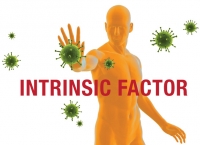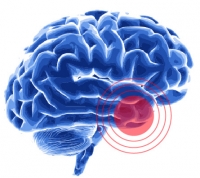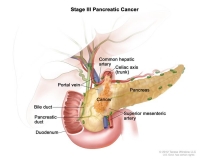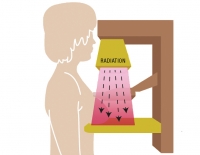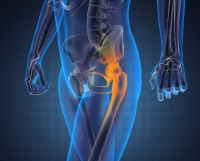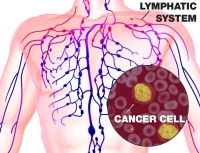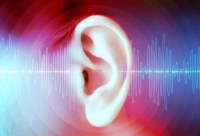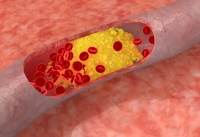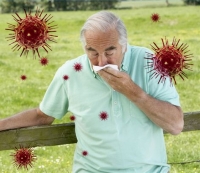02 / 05 / 2015
Phytonutrients are natural components of plants with important functions, such as protecting plants from insects, diseases, draught, ultraviolet rays, and pollutants. Until recently, phytonutrients were not considered as important nutrients for humans; however, they are now thought to be necessary to sustain human life. It has been shown that several phytonutrients can reduce the incidence of chronic diseases, e.g., diabetes, hypertension, atherosclerosis, and cancer.
01 / 22 / 2015
Malnourishment is not hunger! Although global hunger is an ongoing struggle for more than one billion people, severe acute malnutrition is a more serious condition causing 45% of deaths in children under five years old. Worldwide, 34 million children are living with malnutrition, and every year at least one million of them die due to severe malnutrition and related diseases.
01 / 07 / 2015
Every year the shift towards cold temperatures in winter marks the beginning of flu season in the northern hemisphere. The spread of the flu virus is further facilitated by people gathering and staying indoors and by people with compromised immune systems. Therefore, many turn to supplements to support their immune system and boost internal protection against viruses. However, in choosing supplements most of us miss an important aspect that is the efficacy of the supplements to support healthy blood production and a strong immune system. This may be a reason why some people, despite regularly taking vitamins, become sick simply, because their body may not be properly absorbing the supplements. This knowledge is particularly important and something we should retain, as we get older.
12 / 10 / 2014
A primary brain tumor is a highly aggressive type of tumor originating from brain tissues. Secondary brain tumors are the tumors that spread to the brain from cancers originating in other parts of the body (such as melanoma, the lungs, breasts, kidneys, and colon). The US estimates 23,380 adults will be diagnosed with primary brain tumors in 2014 and approximately 14,320 adults will die from those tumors. European statistics reported 57,132 cases of malignant brain tumors according to a 2012 statistical report.
11 / 24 / 2014
The pancreas, located directly behind the lower part of the stomach, is a vital organ secreting various digestive enzymes and hormones (e.g. insulin) that regulate blood sugar levels in the body. Cancer of the pancreas is a serious and almost always fatal disease. It is the twelfth most common cancer in the world with 338,000 new cases diagnosed in 20121. However, it is projected that pancreatic cancer will be the second deadliest cancer by 2030. According to the American Cancer Society’s 2014 estimates, 46,420 people will be diagnosed with pancreatic cancer in the US and 39,590 deaths are expected to be due to this disease. In Europe, there were approximately 103,845 cases of pancreatic cancer in 2012. Only 4-5% of the people diagnosed with pancreatic cancer live beyond 5 years after their diagnosis. This is because pancreatic cancer is usually diagnosed at a very late stage due to a lack of specific symptoms and, similarly to other cancers, no effective cure is available.
11 / 11 / 2014
Gum disease affects everyone and is not exclusively a childhood disease. The Centers for Disease Control and Prevention (CDC) estimates about half of all American adults tend to have advanced gum disease at the time of diagnosis. This is because gum disease rarely produces uncomfortable symptoms until it is in late stages. While dentists look for specific signs to diagnose gum disease, certain symptoms may indicate underlying gum problems. Symptoms such as red, swollen, and painful gums, bleeding while brushing and flossing, constant bad breath, or a bad taste in mouth due to bacterial infection in gum pockets, warrant attention and further evaluation. There are studies proving a connection between gum disease and other systemic conditions such as heart disease, stroke, rheumatoid arthritis, diabetes, and many others.
10 / 29 / 2014
Today women are well aware of their 1 in 8 lifetime risk of breast cancer. Every year multiple awareness campaigns focus on identification of risk factors, yearly screening, early diagnosis, and subsequent treatment of breast cancer. Many women are subjected to yearly mammography screening in the hopes of early detection of breast cancer. However, after many years of its repeated use on thousands of women, the risks are being highlighted and new guidelines are being discussed. It is up to the individual woman and her physician to determine the usefulness of a routine mammogram, however many experts are now critical of yearly mammography for every woman over 40 years old.
10 / 22 / 2014
Excluding skin cancer, breast cancer is the most common cancer in women in the US, and about 1 in 8 women are likely to develop it during their lifetime. The American Cancer Society estimates that in 2014, about 232,670 new cases of invasive breast cancer, and 62,570 of noninvasive (in-situ) breast cancers will be diagnosed in the US. Worldwide approximately 1.38 million new cases are diagnosed and 458 000 deaths occur from breast cancer each year.
10 / 06 / 2014
Osteosarcoma is the most common type of bone cancer frequently occurring in children and young adults between the ages of 10 and 30. People over 60 are also at an increased risk. In the US, almost 800 new cases of osteosarcoma are diagnosed every year and more than 400 are in children and teens younger than 20. Initial symptoms of osteosarcoma, such as pain, bone or joint swelling, and decreased joint motion can be misleading and frequently occur in children due to sports and other injuries. In older adults, the symptoms can be misdiagnosed as arthritis.
09 / 18 / 2014
Leukemia is a cancer of the bone marrow, which produces blood cells. Patients with leukemia experience an excessive production of white blood cells (WBCs) or leukocytes. It is the tenth most commonly diagnosed cancer in the US and is the most common cancer in children. In the US, approximately 52,380 people are expected to be diagnosed with leukemia in 2014. The numbers are equally staggering in Europe with 82,329 cases; and Asia reported 167,448 cases of leukemia in 2012. Leukemias are largely divided into acute (rapidly progressing), chronic (slower progression), myeloid, and lymphoid types depending on the type of affected cells (AML, ALL, CML, CLL). The most common type of leukemia in children is ALL, and in adults, it is AML, CML, and CLL.
09 / 03 / 2014
Every three minutes in the United States one person is diagnosed with some type of blood cancer. This includes cancers of the white blood cells (leukemia), various parts of the lymphatic system (lymphoma) and in bone marrow (myeloma). Lymphomas are cancers of the immune system affecting lymphocytes (a specific type of white blood cells) causing enlargement of lymph nodes. These enlarged lymph nodes are generally painless, unlike painful nodes in an infection. Such painless enlargements of the lymph nodes in the neck, armpits, and groin areas are usually one of the initial symptoms of lymphomas, and are associated with weight loss, night fevers, and other symptoms.
08 / 20 / 2014
Tinnitus ("Tin-EYE-tus") is a symptom characterized by an auditory perception of noise - or ringing - in the ears. However, patients also describe the noise as hissing, pulsing, whooshing, clicking, or similar sounds in the ear. It is estimated that worldwide over 100 million adults are affected by tinnitus. It can disturb their daily lives with hearing loss, long-term sleep disturbances, changes in cognitive ability, challenges in employability and relationships, and it can cause depression. Although anyone can get tinnitus, tinnitus induced hearing loss is the number one service related disability for veterans costing the US government over $2.26 billion in compensation.
08 / 06 / 2014
During the transitional period of menopause, women experience symptoms such as hot flashes, night sweats, irritability, mood changes and sleep disturbances. This process can take between two and three years or as long as 15 years for some women, and with widely varying severity. About 20-25% of women have severe symptoms requiring treatment. Hormone replacement therapy (HRT), or menopausal hormone therapy (MHT), is a short-term treatment used to relieve menopausal symptoms experienced by women when the body stops producing the female hormones estrogen and progesterone. However, in 2002, a major clinical study called the Women’s Health Initiative (WHI) was stopped because the researchers found that the risks of HRT vastly outweighed its perceived benefits. Over 80% of the women were immediately taken off of HRT because the treatment significantly increased the incidence of heart attacks, blood clots, and strokes. Later, it was also found that HRT increased the risk of certain types of cancers such as uterine, breast, and ovarian cancer, as well as liver and gall bladder diseases, thus requiring further treatment.
07 / 23 / 2014
The number of people diagnosed with high cholesterol blood levels has been increasing steadily with each newly issued cholesterol guideline. Currently, about 71 million American adults and about 35% of children as young as 9 have borderline or high cholesterol levels and, as such, require cholesterol lowering medications. According to the World Health Organization (WHO), over 50% of adults in high-income countries and approximately 25%-35% in lower income countries have elevated cholesterol levels.
07 / 09 / 2014
We still hold memories of the public alerts and the scare of the bird flu epidemic from 2003. Millions of infected birds were killed at that time in an effort to stop the spread of the virus to humans. Nevertheless, the bird flu virus continues to infect humans and multiple deaths have been reported since 2003. The FDA recommended antiviral flu medicines such as Tamiflu and Relenza are not very effective, and the bird flu virus has developed resistance to other flu drugs like amantadine and rimantadine.
06 / 25 / 2014
Nearly one third of the world population is infected with the tuberculosis (TB) bacteria even if they may not have any symptoms. According to the World Health Organization (WHO), 8.6 million people had active illness and 1.3 million died from TB in 20121. The US has approximately 10,000 reported cases of TB. In the developing countries, more than 90% of the TB infections and deaths occur in young adults between the ages of 15-44. The death rate is expected to increase worldwide because the TB bacteria have developed resistance to almost all the available treatment options and new approaches to TB are desperately needed.


